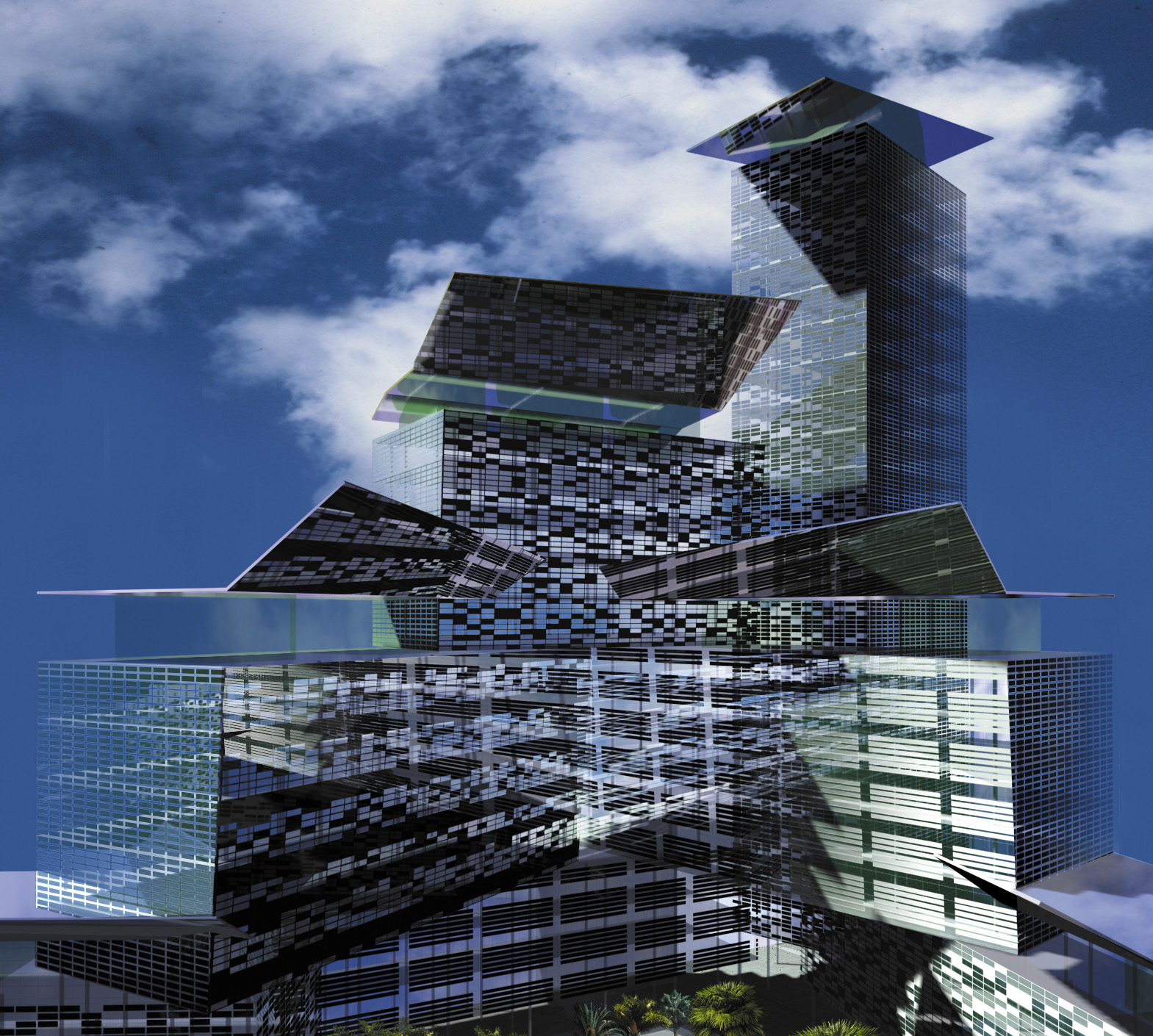Kiryat Arieh Offices
- Petah Tikva, Israel
Capturing and programming the skies of Tel Aviv
Building in Tel Aviv means introducing a new Tel Aviv precinct. It means showing a spirit of architectural modernity capable of giving an image of the city the way others did in the 1930s and 50s.
This image will come into view as you approach from the fast lane of the Geha Highway, one of the agglomeration’s busiest arterial roads. It will first be a silhouette, a skyline, defined by sharp, horizontal roofs at different heights whose rhythms create the feel of a real locale, dominated by an amazingly contoured tower, the identifying sign of the new business centre readable from a long way off. The architectural complex is fairly white, and you can make out banks of glass lines diffracting light at different wavelengths over whole sections of the complex depending on orientation, or over linear slivers determined by the slant of glass slats. These slats will take on colour to display large-scale logos that announce to the whole city the presence of the various companies. At night, the complex will be a blur; only the shop signs will be clear. This play on immateriality will run 24 hours a day; it’s the main feature of the new place.
When you get closer, you discover that the great walls of glass slats are double. The white slats of etched glass protect thick inner walls. The ground floor, under piles, is a mass of small coloured volumes (housing various shops and restaurants) and transparent volumes (building entrances). Between these small structures, you discover a planted landscape, with flowering plants and leafy green shrubs growing in the shade of tall standard trees (eucalyptus, olives…). And you might be moved to enter and explore this interior courtyard garden.
The architectural complex imposes a certain coherence in the middle of a district that’s in the making. It sets the tone for an imminent future.
But the real surprise lies inside the space. If you come by car, you’ll find the underground car park is opened up with planted patios, signposts for visitors who discover through the trees a play of light in which sky, architecture and vegetation merge. These light effects will be very clear for pedestrians coming in off the street, and for visitors accessing the offices via partly glazed lifts: façade mirrors of different orthogonal geometries, different sizes, will be able to be tilted at different angles, causing the sky, the trees and the ground and the architectural patterns to interleave and overlap, in a mix of light and shadow, of sky blue and deep green, punctuated by multi-coloured spots. A legacy of cubist decompositions and surrealist overlays. The virtual recomposition of reality. This place will be in absolute contrast to the city wrapping tightly round it. It will be like an oasis. Symbolically, there will be water…
The roof overhangs, at once shiny and perforated, will provide shade over the office windows. You realise, then, that what you’re seeing is a stack of independent, interacting buildings. From time to time, a sign behind a mirror will remind you who the building belongs to. Most of the mirrors will be in shadow, but the light will come in through reflection. At night, the space will become completely mysterious, with barely identifiable light effects creating different depths and rhythms, unique spaces for the terraces of the interior courtyard garden restaurant.
On a symbolic level, the different façade mirrors will function like screens programmed by the time and the weather; the lines of cladding panels and the grid of windows will be like references to pixels and computer tables.
Modernity is bound up with the issue of permanence and the ephemeral, and the fleeting nature of light as visitors move around: architecture today tries to capture the instant in durable contrivances.
Reflecting the skies of Tel Aviv onto architectural screens, in an oasis of light and greenery – that’s the concept behind my proposal.
Jean Nouvel

